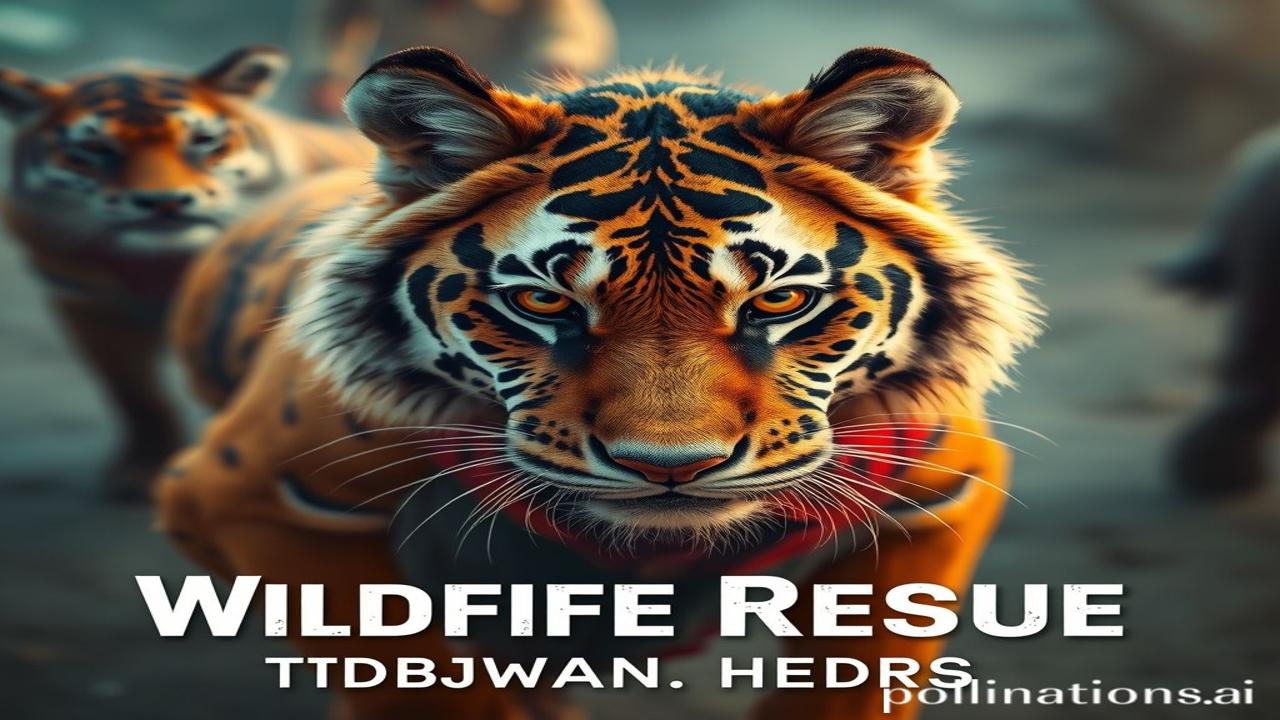Jungle Ki Pukaar: Lost Whispers of Wildlife Rescue in Bharat
Kabhi socha hai, agar jungle bol sakte toh kya kehte? Unke dard, unki umeed, unki zindagi ke baare mein? Waqt ki dhool mein, kuch aisi hi kahaniyan chhupi hain – kahaniyan janwaron ko bachaane ki, jismein koi technology nahi thi, sirf insaaniyat aur prakriti ka gehra rishta tha. Aaj hum baat karenge, Bharat ki un purani, khoi hui, lekin shaktishali wildlife rescue methods ke baare mein.
Wildlife Rescue: Ek Historical Jhalak
Wildlife rescue, yaani jangli janvaron ko bachaana, koi nayi baat nahi hai. Yeh Bharat ki sanskriti mein sadiyon se basa hua hai. Ancient texts like the Arthashastra mention protected forests and penalties for harming wildlife. Raja Ashoka ke zamane mein, janvaron ke liye hospitals banaye gaye the! Lekin in sabke peeche, jo cheez sabse important thi, woh thi community ka involvement. People understood ki janvaron ko bachaana unki responsibility hai, na ki sirf sarkar ki.
Traditional Wisdom: The Foundation
These traditional methods were born out of necessity and a deep understanding of the local ecosystem. Think about it – log jungles mein rehte the, janvaron ko dekhte the, unke behavior ko samajhte the. Unhone seekha ki kaise injured janvaron ko treat karna hai, kaise unhe unke natural habitat mein wapas chhodna hai. This wasn’t just about saving an animal; it was about maintaining the balance of nature – prakriti ka santulan.
कब हुआ और कहाँ / When and Where Did it Happen?
Yeh process koi specific date ya location tak limited nahi thi. Har gaon mein, har jungle mein, har tribale community mein, wildlife rescue ka apna tareeka tha. From the Himalayas to the Western Ghats, the methods varied based on the local flora, fauna, and the traditional knowledge passed down through generations.
ज़मीनी सच – लोग और जीवन / The Human Element: A Tapestry of Traditions
Imagine a tribal village in Madhya Pradesh. A leopard has been caught in a poacher’s snare. News travels fast. The village elder, a man with eyes that have seen generations of leopards, steps forward. He knows the forest like the back of his hand.
“Dekho baccho,” he says, his voice calm yet commanding, “hum sabko milke kaam karna hoga. Dheere se jao, usko daro mat. Hum uski madad karenge.”
Using traditional herbs and knowledge passed down from their ancestors, they sedate the leopard. Carefully, they remove the snare. The women of the village prepare a special concoction of herbs known for its healing properties. The leopard is nursed back to health. Days later, it is released back into the wild.
Dialogue in the Dust:
Villager 1: “Kya hoga agar woh firse kisi ki bakri ko maar de?”
Village Elder: “Hum usko uski jagah denge. Jungle uska ghar hai. Hum apni bakriyon ko save karne ke tareeke dhoondenge, lekin usko nahi maar sakte. Hum sab ek saath hai.”
This is the essence of traditional wildlife rescue – a collective effort, driven by empathy and a deep respect for all life.
धरोहर और पहचान / Cultural Significance Today: An Echo in Modern India
Today, in modern India, while we have advanced veterinary techniques and wildlife rescue centers, the spirit of traditional methods still echoes. Many rural communities still rely on traditional knowledge to deal with injured animals. Conservation organizations are increasingly recognizing the value of incorporating this knowledge into their practices.
Bharatiyata and Modern Identity
This traditional wisdom is an integral part of Bharatiyata. It reflects our values of ahimsa (non-violence), karuna (compassion), and the interconnectedness of all life. It reminds us that we are not separate from nature, but a part of it.
मजेदार तथ्य या भ्रम-भंजक / Fun Fact & Myth-Buster
Myth: Traditional methods are outdated and ineffective.
Truth: While modern techniques are essential, traditional knowledge often holds the key to understanding animal behavior and treating injuries in specific environments. Many modern medicines are derived from traditional herbal remedies.
दृश्य और भावनाएं / Visual & Sensory Layer: Breathing Life into the Past
Picture this: the air thick with the scent of damp earth and medicinal herbs. The sound of chirping birds and rustling leaves. The feel of rough bark against your skin as you navigate through the forest. The anxious faces of the villagers, their eyes reflecting a mix of fear and determination.
The silence as they approach the injured animal, a silence broken only by the gentle murmur of prayers. The relief that washes over them as they successfully release the animal back into its habitat. These are the sensory memories that remain, a testament to the power of human compassion and traditional wisdom.
अंतिम विचार या उद्धरण / Closing Insight
Just as the ancient rishis understood the interconnectedness of all life, we too must recognize the value of traditional knowledge in wildlife rescue. It is not just about saving individual animals; it is about preserving our cultural heritage and ensuring a sustainable future for all.
“सर्वे भवन्तु सुखिनः सर्वे सन्तु निरामयाः” – May all be happy, may all be free from illness. Let this be our guiding principle as we move forward, honoring the wisdom of the past and embracing the possibilities of the future. Aur yaad rakho, jungle ki pukaar kabhi nahi thamti. Humko bas sun’na hai.
